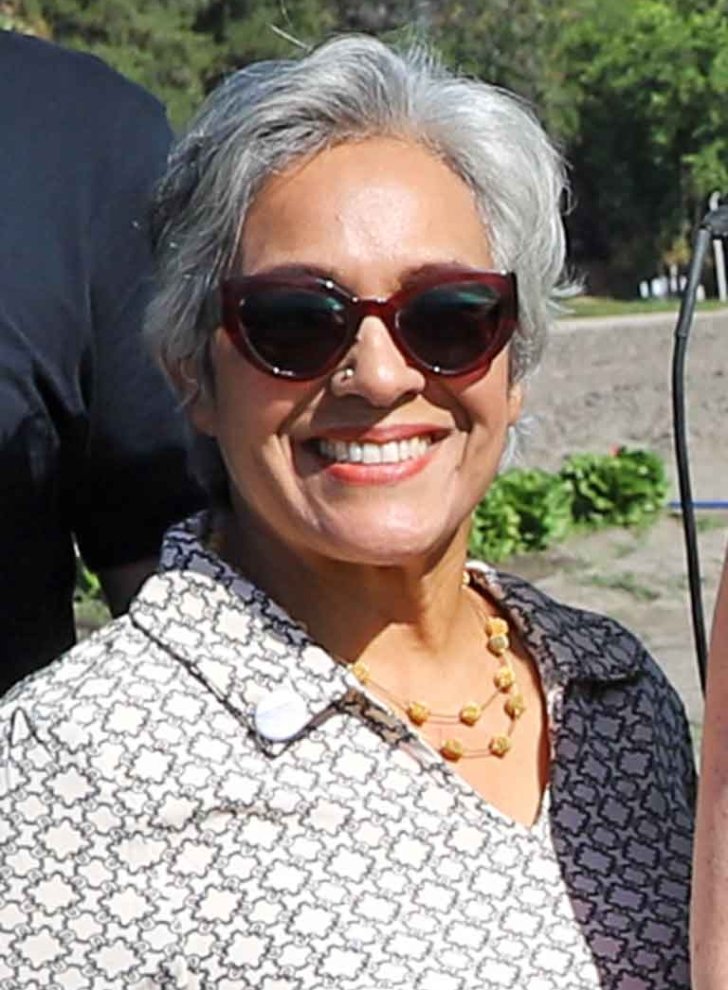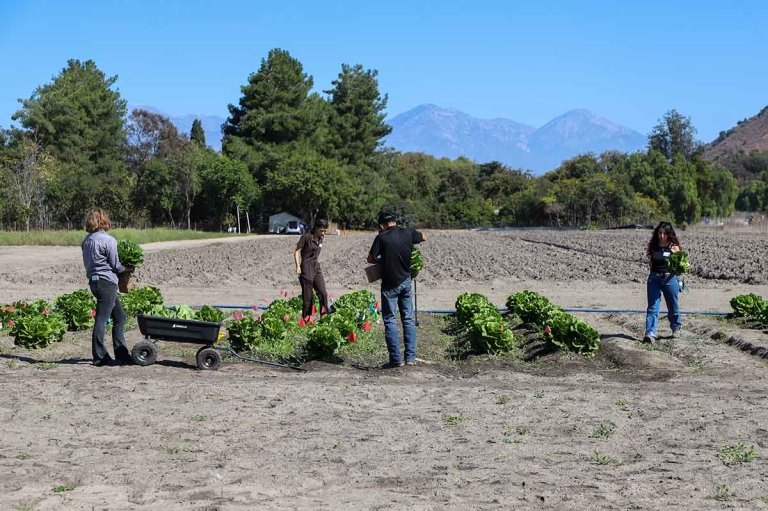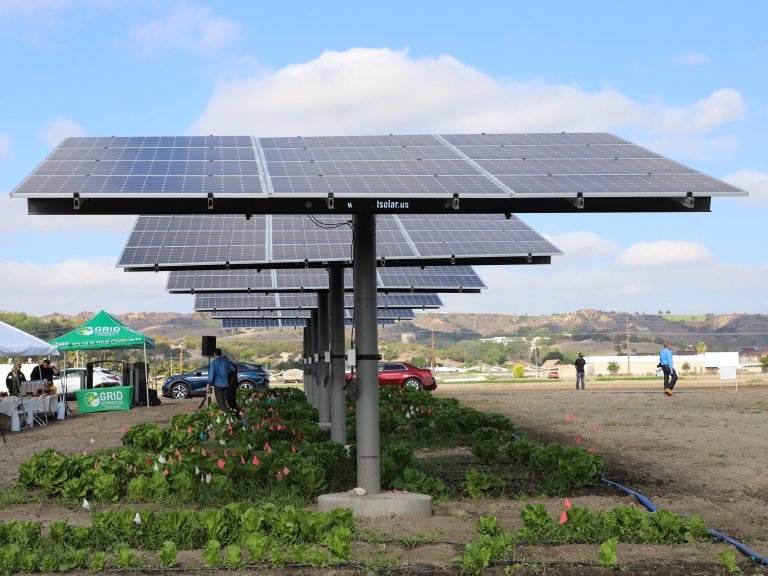Agrivoltaics & the Robert Redford Conservancy
A groundbreaking collaboration among Pitzer College, Cal Poly Pomona, and the Foundation for Food and Agriculture Research (FFAR) has resulted in the creation of Southern California’s first agrivoltaics research site

"This is the kind of event that really gives me hope for the future of agriculture in California. This project is a microcosm of what farmers do every day. They wake up with the sun and try to figure out ways to do things better."
Virginia Jameson
Deputy Secretary, Climate and Working Lands
California Department of Food and Agriculture
The project's agrivoltaics system generates enough electricity to provide an attractive and tangible alternative to fossil fuels.
What is Agrivoltaics?
Developed in 1981 by two German physicists, agrivoltaics is a pioneering effort that combines solar energy production with crop development on the same land. Crops are planted in conjunction with a solar panel layout to improve and extend harvests, cut irrigation costs, improve the soil, mitigate heat, or restore pollinator habitats, all while generating solar energy.
Agrivoltaics farming is global, with operations in China, East Africa, France, Germany, Greece, Italy Japan, Malaysia, Spain, The Netherlands, and the United States. California's first commercial agrivoltaics site is located at Spadra Farm in Pomona, Ca., the location of Pitzer College's research operation.
About the Project

Pitzer's agrivoltaics research site at the Spadra Farm at Cal Poly Pomona is the first of its kind in Southern California. The project was made possible by a $1.8 million grant awarded to Pitzer College by the Foundation for Food & Agriculture Research (FFAR) to research regenerative farming and solar energy.
To study the effects of the solar panel shading on the lettuce, Pitzer's Robert Redford Conservancy of Southern California and its partners planted a parallel strip of the romaine crop in the sun as a control. The faculty-student research team hopes to use their data to inform future water conservation and energy-efficiency practices across the state and encourage more policymakers to make this option available to farmers in their communities.
Farming for the Future

"We're making agricultural history here in Southern California and hopefully for all of California, so anyone can come and see how this works, why it works..."
Rose Olivas
Conservancy Fellow and Project Co-Principal Investigator
Robert Redford Conservancy for Southern California Sustainability
Agrivoltaics and Pitzer's Values
Environmental Sustainability
“Folding in energy production and water conservation with growing food is one of the most promising directions for regenerative agriculture in hot and dry places like Southern California.”
Susan Phillips
Professor of Environmental Analysis
Director, Robert Redford Conservancy for Southern California Sustainability
Agrivoltaics helps farmers do more with the same land and the same resources.
Powered by Students

The project site provides opportunities for students to learn about this innovative climate-smart agricultural technology, partner with faculty in gathering research, and engage in land stewardship and management.
Powered by Partners
Strategic collaboration with multiple partners amplifies the regenerative agriculture work of Pitzer College.
Our project partners include:
Agrivoltaics in the News

Featured
The Future of Farming Comes to SoCal
California Agriculture Deputy Secretary Virginia Jameson Delivers Keynote at Launch of Region’s First Agrivoltaics Installation
Contact Us
- Conservancy Fellow in Applied Research
- Agrivoltaics Project Co-Principal Investigator
Social Responsibility
Emily Kuhn PZ'22
Farm Manager of Ecological Resources & Research Assistant
Robert Redford Conservancy for Southern California Sustainability
Agrivoltaics provides a promising response to help these farms stay afloat amidst mounting challenges.